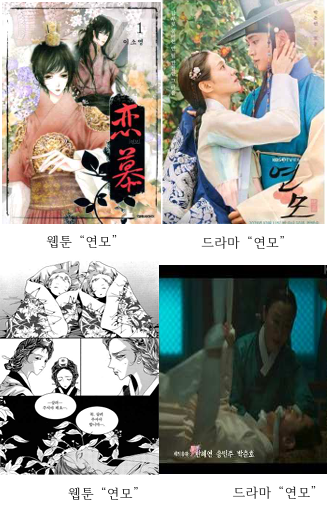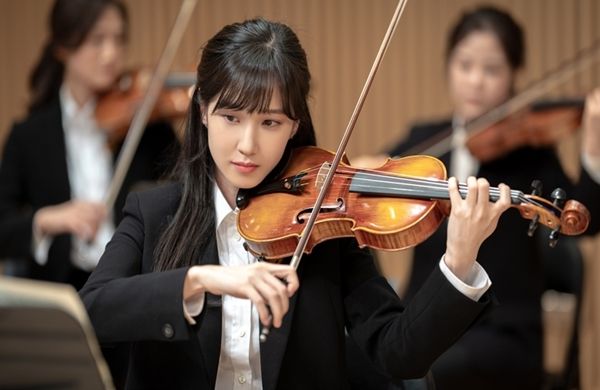[한류] Analyzing the Globalization Strategies of Korean Dramas in the Digital Age through the Concept of “Intertextuality”: With a Focus on the KBS Historical Drama, “The King’s Affection”(드라마 '연모'의 상호텍스트성에 기반한 전략의 효과)
The study analyzes how content nodes of K-dramas are positioned on the content universe through intertextuality, examining their globalization strategies in the 21st century digital age.
Author: Seojeong Bae (Undergraduate student in Seoul National University)
1. Emerging of The Content Universe
The media landscape has been turned into the transnational content universe since the rapid digitalization in the 1990s. With globalization driven by digital innovation, this content universe, composed of vast content collections, is expanding without limits. Viewers from all over the world gather in this virtual space. Here, they are led by platform algorithms recommending what to watch next, or sometimes actively navigate the content universe by surfing.
As a result, today’s content production is no longer "which content should we create." Now, it is "where should a new content node be located in order to appeal to global viewers?"
2. Research Topic
This paper explains the problem of "Positioning content nodes on the content universe", using the “intertextuality” theory. In this way, I will explore globalization strategies of K-dramas in the 21century digital age. Specifically, the objective of this research is understanding the way a K-drama makes linkages with other texts and catches global attraction.
The key concept of this research is "intertextuality." As we can infer from the morpheme of the word, it refers to interconnections among various texts. It assumes that a single text does not exist alone, and actively forms relationships with others. This paper will divide this term into two sub-concepts, "intertextuality within the border," and "intertextuality between transnational texts." The former one refers to connections created within one nation’s texts while the latter one means linkages to foreign texts.
Before our discussion, I will give you an overview of "The King’s Affection(연모)." It is about twin siblings born into the family of the king in the Joseon dynasty. Because of a tragic twist of fate, the female twin "Dam Lee" pretends to be the male prince "Hwi Lee." This fake identity is the pivotal narrative, with a lovely romance between "Dam Lee" and “Ji-woon Jeong.”
3. Intertextuality within the Border
3.1. interconnections with the Original Work through Adaptation
Let us analyze strategies used to form linkages within one nation’s textual landscape. First, it is the "interconnections with the original one through adaptation." The drama "The King’s Affection" adapted a popular webtoon of So-yeong Lee. Although “remakes,” where transformation is made within the same genre, often accomplish artistic transformations, creative reinterpretations are frequently limited by contractual mandatories that necessitate adherence to the original work. Conversely, in adaptations, because of genre heterogeneity, broader reinterpretations and transformations are permitted. This is why the drama "The King’s Affection" is different from its source material in terms of narrative structure, character, and conclusion.
In this context, among online audiences who cross the original and its adaptation, dynamic discussions are triggered regarding their similarities and differences, which leads viewers to enjoy a "spot the difference game.”

3.2. Interconnections with Domestic Classical Texts
Additionally, the drama is linked to classical texts of Korea. According to Jun-hee Kim (2023), "The King’s Affection" is similar with Korean classical novels like "Changseongamuirok" since they both utilize the “twin siblings-motif” in which gender roles are reversed as the strategic use of similar appearances.
This strategy enables the content to appeal to both domestic and international audiences. For domestic people, due to familiar cultural codes and traditional narratives, the drama can be easily understood and felt more interesting. On the other hand, for foreigners, a specific Korean cultural code can be regarded as wholly new. Also, when using universal codes, it recollects cultural messages they have seen in their own country’s narratives.
3.3. Interconnections through Actors
As platforms like Netflix and YouTube become prevalent, many people are drawn by recommendation algorithms. With this phenomenon, the "actor-mediated interconnection" strategy also gets significance. For example, when the tvN drama 'Queen of Tears(눈물의 여왕)' gained popularity, videos of Soo-hyun Kim and Ji-won Kim, who acted as main characters, recorded high viewership as they were recommended a lot. So, we can notice the central role of actors as a strong link. An actor’s portrayals in prior dramas affect what viewers perceive when watching the other one. It functions as a kind of "filter," which influences audiences’ anticipation and interpretations.
For instance, when viewers encounter Eun-bin Park in " The King’s Affection", they naturally remind of her previous roles, such as the charismatic female, Hyegyeonggung Hong in "Secret Door"(SBS, 2014) and her lovely portrayal in "Do You Like Brahms?"(SBS, 2020). These prior experiences form their interpretation of her character "Dam Lee" in " The King’s Affection." Similarly, the K-POP star, Rowoon evokes connections not only with his soft male characters in previous dramas, but also with attractive idol images.

3.4. Interconnections through OSTs
Next, we will explore strategic use of Original Soundtracks. Although many people simply regard OSTs as background music inserted into dramas, they function as a powerful mnemonic link to stimulate people. In "The King’s Affection," we can observe two soundtracks, “If I"(by Ji-young Baek) and "I Know"(by Lin), both of which are sung by famous OST singers, who produced renowned OSTs of “Iris”(KBS, 2009) and “My Love From the Star”(SBS, 2013). When encountering this song, remembrances of past drama consumption are triggered, which brings listeners into the mood of that moment. As a result, attracted by familiar tone color, viewers remembering these voices can be immersed faster than those who have not been exposed to them. Moreover, producers, particularly involved in historical dramas, often plan to include a popular idol group member as an OST artist. This is because the strategy helps to enhance modern sensibilities and appeal to young generations although it depicts historical episodes.
4. Intertextuality between Transnational Texts”
4.1. Interconnections with Foreign Texts
The following are connections among transnational texts. The first is the connections created by transforming narratives of foreign texts. “The King’s Affection” is connected to Mark Twain’s novel “The Prince and the Pauper.” In both stories, the prince and his look-alike reverse their social status and roles. This sudden reversal enables the disguised prince, who understands general people, to practice good politics. Also, we can understand that the narrative assumes “simulacra” since it imagines what if the fake substitutes the original one and overturns the hierarchy.
4.2. Interconnections through the Hybrid Whiteface
Next, it is a linkage through the “hybrid whiteface” of Korean actors. According to Seok-kyung Hong (2013), people's face is a place where identity negotiation appears, imprinting and reproducing one's cultural identity. Today, Korean actors' faces displayed on screen using filters is not the yellowface assumed by Westerners, but the “hybrid whiteface” as they have big eyes and white skin which appeals to both Easterners and Westerners. In other words, they are pursued as beautiful objects rather than perceived awkward and unfamiliar. Accordingly, both Eastern and Western viewers can easily associate their country’s romance dramas with similar love stories, and be totally immersed.
5. Effects
Let us see the effects of “intertextuality within the border.” When we use a word, “bubble”—like in the theoretical term, “Filter Bubble,”—it usually possesses negative implications. However, in fact, many people establish their own taste, so they prefer the same things repeatedly. This is why when linking to domestic content, it easily attracts people who are pursuing ceaseless interest in the similar collection of content.
Next is the effect of the strategy of being linked to foreign texts. Language differences are still acting as an “one-inch barrier,” which constrains transnational content consumption. However, by transforming universally comprehensible narratives, characters, and scenes from other countries, foreign viewers can be immediately into the story and unfamiliarity will be greatly reduced. Particularly, Korean dramas have often adopted this strategy in the first episode which usually functions as an entry for dramas. In addition, the hybrid white face of Korean actors has the effect of breaking oriental prejudice and fear toward foreign people. It also makes global viewers associate their country's content and obsessed with the drama.
6. Conclusion
A content is produced through various paradigmatic choices such as scenes, narratives, characters, and OSTs. Depending on how existing texts are linked, and whether they have potential links with future content, the new content node will be positioned differently in the "content universe."
As for content consumption, excessive universality is considered a kind of cliche, and excessive cultural uniqueness is perceived awkward and unfamiliar to foreign viewers. As a result, finding a fine gap in the global content universe becomes increasingly difficult. It can be helpful to be linked to a strong node that has been connected to many. However, it would also be strategically advantageous to occupy a wholly new space as it enables it to be the core of numerous linkages. In this context, interconnections among texts are highly demanded. In conclusion, when looking back at the intertextuality strategies of Korean dramas, we may be able to create content that can be loved by both domestic and foreign viewers.
참고자료
[1]김준희 (2023). 고전 콘텐츠에 나타난 여아 배제 및 쌍둥이 남매 모티프의 변용 연구-만화, 드라마 <연모>를 중심으로. <한국고전연구> 62집, 183-221. https://academic.naver.com/article.naver?doc_id=965170507
[2]홍석경 외 (2016). <드라마의 모든 것>. 서울: 컬쳐룩
[3]홍석경 (2013). <세계화와 디지털 문화 시대의 한류>. 서울: 한울 아카데미
분석 대상
송현욱·이현석 (연출) 한희정 (극본) (2021) <연모> [드라마], 서울: KBS TV.
분석 참고 대상
김욱동 역 (2010) <왕자와 거지>. 민음사.
이소영 (2014) <연모> [웹툰].
작성자

![[분석] OTT 시대의 막장, 왜 반복되는가 ― 감정의 알고리즘과 욕망이 설계되는 방식](https://cdn.media.bluedot.so/bluedot.kwave/2025/12/p2hxlj_202512201852.jpg)
![[연구] 넷플릭스 한국 진출 10년을 돌아보다: ‘약한 고리 깨기’에서 ‘원숭이 꽃신’까지](https://cdn.media.bluedot.so/bluedot.kwave/2025/12/nijw81_202512140459.jpg)